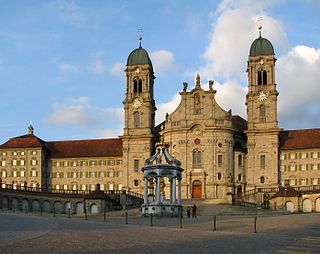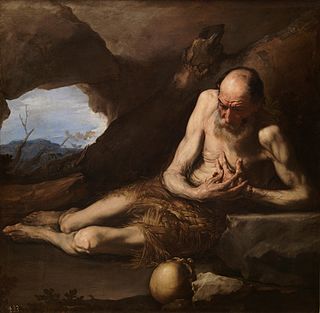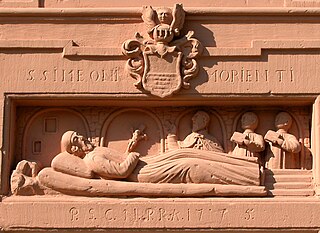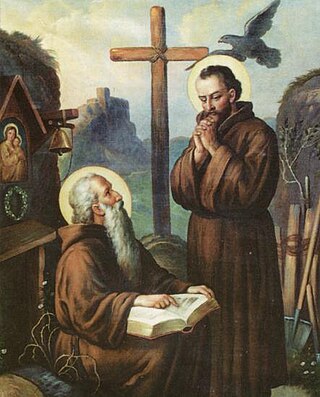
Benedict of Nursia, often known as Saint Benedict, was an Italian Christian monk, writer, and theologian who is venerated in the Catholic Church, the Eastern Orthodox Church, the Oriental Orthodox Churches, the Anglican Communion, and Old Catholic Churches. He is a patron saint of Europe.

Einsiedeln Abbey is a Roman Catholic monastery administered by the Benedictine Order in the village of Einsiedeln, Switzerland. The abbey is dedicated to Our Lady of the Hermits, in recognition of Meinrad of Einsiedeln, a hermit Catholic saint. The monastery is not under the jurisdiction of a diocese or a bishop because it is a territorial abbey.

March 29 - Eastern Orthodox liturgical calendar - March 31

April 19 - Eastern Orthodox liturgical calendar - April 21

Apr. 30 - Eastern Orthodox Church calendar - May 2.

May 15 - Eastern Orthodox Church calendar - May 17

May 21 - Eastern Orthodox Church calendar - May 23

Paul of Thebes, commonly known as Paul the First Hermit or Paul the Anchorite, was an Egyptian saint regarded as the first Christian hermit, who was claimed to have lived alone in the desert of Thebes, Roman Egypt from the age of sixteen to the age of one hundred and thirteen years old. He was canonized in 491 by Pope Gelasius I, and is venerated as a saint by the Catholic Church, Eastern Orthodox Church, and Oriental Orthodox Churches.

July 10 - Eastern Orthodox Church calendar - July 12

Maurus (512–584) was the first disciple of Benedict of Nursia. He is mentioned in Gregory the Great's biography of the latter as the first oblate, offered to the monastery by his noble Roman parents as a young boy to be brought up in the monastic life.

October 5 - Eastern Orthodox liturgical calendar - October 7

Nilus the Younger, also called Neilos of Rossano was a Griko monk and abbot from Calabria. He was the founder of Italo-Byzantine monasticism in southern Italy. He is venerated as a saint in the Eastern Orthodox and Catholic churches, and his feast day is celebrated on September 26 in both the Byzantine calendar and the Roman Martyrology.

January 15 - Eastern Orthodox liturgical calendar - January 17

Placidus was a disciple of Benedict of Nursia. He was the son of the patrician Tertullus, was brought as a child to Benedict at Sublaqueum (Subiaco) and dedicated to God as provided for in chapter 69 of the Rule of St. Benedict (oblate).

Amator(in French)Amadour or Amatre was bishop of Auxerre from 388 until his death on 1 May 418 and venerated as a saint in the Catholic Church. Amator's feast day is celebrated on 1 May.

Saint Simeon of Trier, also Symeon, was a monk and recluse who died in Germany in 1035. He is venerated as a saint in the Eastern Orthodox Church with his feast day on May 1, and in the Catholic Church in Germany.

November 11 - Eastern Orthodox liturgical calendar - November 13

Benedict of Skalka or Szkalka, born Stojislav in Nitra, Hungarian Kingdom, was a Benedictine monk, now venerated as a saint. He became a hermit and lived an austere life in a cave along the Vah River. Benedict was strangled to death in 1012 by a gang of robbers looking for treasure. He is venerated in Slovakia, Hungary, Poland and the emigrant diasporas in the United States.
Andrew Zorard was a Benedictine monk originating from Poland but active in Slovakia, who is venerated as a saint in the Catholic Church and the Orthodox Churches

The Forterre is a small natural region on the western edge of the French region of Bourgogne-Franche-Comté.










